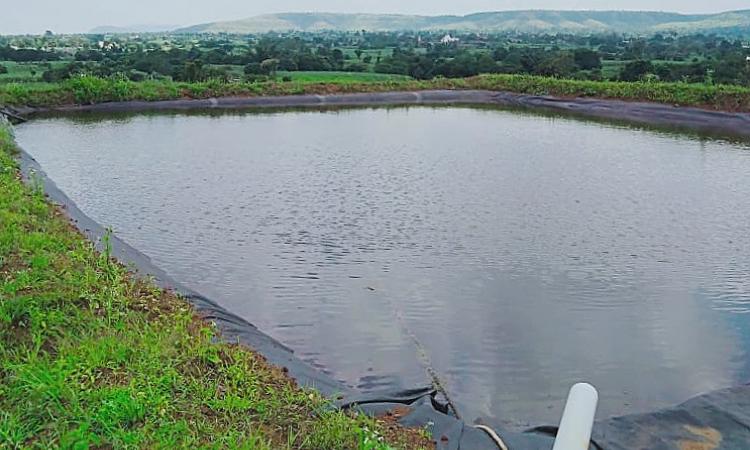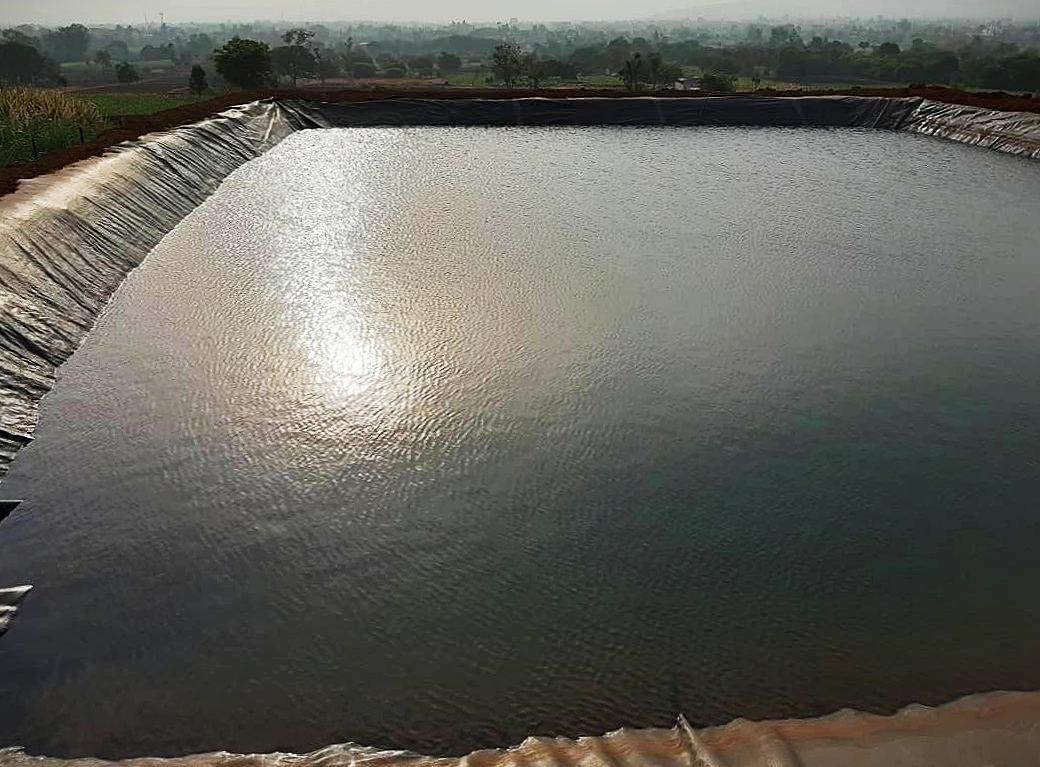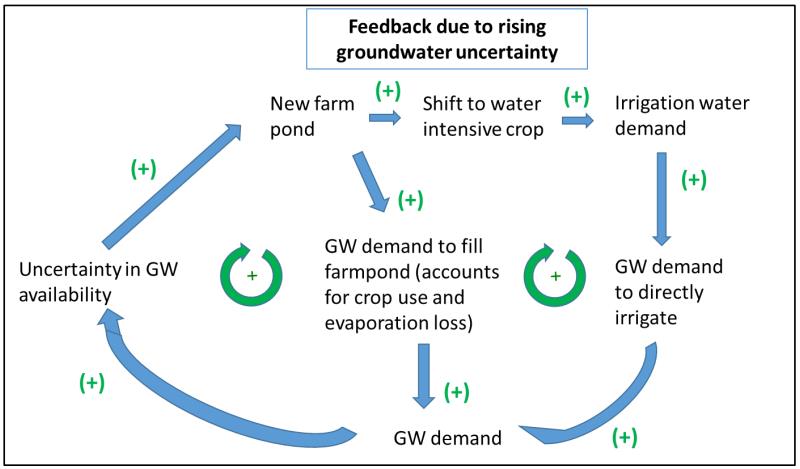
Agriculture and inefficient water use in India
The agricultural sector employs nearly half of the workforce in India. However, its contribution to the GDP has been declining steadily in recent years from from 18.2 percent in 2014-15 to 16.5 percent in 2019-20 according to the Economic Survey 2019-20. As high as 61 percent of the farmers practice rainfed farming with 55 percent of the crop area in India being rain dependent, while the rest is irrigated using tubewells, canals, wells, tanks, and other sources.
Fifty percent of agriculture depends on groundwater in India with 39 million hectares of land irrigated by groundwater, 22 million by canals with about 100 million hectares being rainfed. Agriculture consumes around 80 percent of India’s available water and 90 percent of the total production includes water-guzzling varieties like sugarcane, wheat, and rice. This inefficient use of water has led to a dip in India’s per capita water availability from 4000 m3 in 1947 to 1545 m3 in 2015 making India a water stressed country.
The farm ponds scheme of water starved Maharashtra
The state of Maharashtra falls under the medium to high water stress category in terms of water availability in the country. Marathwada and Vidarbha, parts of Maharashtra that fall under the rain shadow region of the South-west monsoon, receive less rainfall compared to the western part and often face water scarcity. Marathwada region has often been in the news for recurrent droughts over the last few years. Besides poor rainfall, inefficient water use, undesirable cropping patterns (focus on water guzzling crops like sugarcane, rice etc.), diversion of agricultural water to industries, increased water demand, and climate change have been found to worsen the water scarcity in the region.
To conform to the demand for irrigation, the Maharashtra government, in 2017 launched the Demand-based farm pond (Magel Tyla Shet Tale) scheme as lack of irrigation facilities often result in low yields causing less profitable agriculture, and keeps pushing farmers into a debt trap. For example, as high as 12021 farmers committed suicide in Maharashtra between 2015 and 2018 because of debt problems. The farm ponds scheme was launched to curb this, with a hope to provide a permanent solution to the recurrent water scarcity faced by farmers thus helping to increase produce, enhance incomes and reduce suicides among farmers.

What are farm ponds
Farm ponds are square or rectangular holes made on the earth which harvest rainwater and store it for future use. The farm pond has an inlet that regulates the flow of water inside the pond while the outlet discharges excess water. The pond is surrounded by a small bund, which prevents erosion from the banks of the pond. Water from the farm pond can be used for the fields either manually or by pumping or both.
This ensures water for irrigation and can also help to harvest one additional crop contributing surplus income. However, evidence shows that farmers do not follow proper methods while using farm ponds. For example, nowadays, with the availability of plastic, farmers lay plastic on the surface of the ponds to prevent percolation thus affecting groundwater tables by preventing groundwater recharge. Also, farm ponds need periodic desilting, and the chances of plastic damage while using heavy machines like JCB for desilting creates a financial burden on farmers. Thus analysing modern farm ponds from three different angles - economical, agricultural, and hydrological is essential.
Economical: The state government allots 50 percent subsidy for farm ponds and water availability due to farm ponds has found to have changed cropping patterns. It has been found that farmers having farm ponds harvest more than 1 crop every year with cash crops like sugarcane and also horticulture that grants surplus income. This has attracted other farmers in the region who have adopted farm pond irrigation. However, instead of using farm ponds for rainwater harvesting, many pond owners fill in the farm ponds by extracting groundwater from dug wells and borewells and use it to irrigate the fields. The government provides a huge subsidy on electricity, making it almost free and thus farmers continue to pump water and use it to grow cash crops and for orchard cultivation thus, helping them earn large amounts of profits, but at the cost of overextraction of groundwater.
Hydrological: Traditionally, ponds were used to recharge groundwater and catch rainwater. Nowadays because of subsidies, big and small farmers build farm ponds using plastic lining, which defeats the main purpose of ponds i.e. groundwater recharge through rainwater harvesting. While promoting farm ponds in water-scarce areas, they are filled by pumping groundwater leading to increased groundwater extraction. This encourages farmers to cultivate water-intensive crops, orchards, etc. To meet irrigation demand, they start investing more in farm ponds further increasing groundwater extraction. Also, evaporation losses are greater in farm ponds due to exposure of a large surface area to scorching heat during summer. Hence a vicious cycle is created where losses create the need to pump more water to meet the needs of water guzzling cash crops.
The flowchart below depicts this cycle-

Agricultural: Increased farmers’ income due to assured irrigation and an extra crop each year are the main positive outcomes of farm ponds when used correctly. Farm ponds act as flood control systems and drought mitigation tools - rise in extreme events like these due to climate change are a serious threat to agriculture in recent times. Animals can be domesticated if cultivation is perennial with assured water availability and fodder, creating additional income. However, we need to examine the negative side too. As farmers continue to cultivate water-intensive crops, the water demand continues to rise. The government has no control over the cropping patterns as Minimum Support Price (MSP) is the tool that influences cropping patterns.
Making farm ponds sustainable
The main problem with farm ponds is their depiction as a magic wand for water scarcity by the media and the government. We now know how the main objective is not fulfilled due to faulty design and structure. New structures do not have outlets to discharge additional groundwater, and use of plastic lining hampers water percolation. These steps need to be undertaken to make farm ponds ecologically sustainable:
- Regulating borewells and the use of groundwater for farm ponds
- Limiting the number of farm ponds and size in each village depending on hydrology, topography, climate patterns, population, etc. These provisions must be included in the scheme itself.
- Finding substitutes for plastic linings, like WOTR (Watershed Organisation Trust), Pune that experimented with 80 percent soil and 20 percent cement for coating, which reduced 50 percent cost and was found to be ecologically effective and sustainable.
- Using farm ponds for domestic use. This experiment was carried out in the Marathwada region successfully by WOTR. Community farm ponds were built with participation from the locals right from planning, implementation to maintenance thus, creating ownership amongst the beneficiaries. It also helped in reducing the number of ponds in the village.
- Covering pond surfaces to reduce evaporation. Aquaponics can be practised for reducing evaporation and providing supplementary income. And if possible pisciculture too.
- Farm ponds constructed with minimum surface area and greater depth can also reduce evaporation when temperature rises above 40 degrees.
- Provision of subsidy to small and marginalised farmers to avoid loss for diverting available land for farm ponds, hence reducing area under cultivation.
- Focus on micro-irrigation projects like drip and sprinkler irrigation which provide a higher rate of interest than large irrigation projects like the dams, canal irrigation, etc.
- Promotion of cottage industries like food processing, thus motivating farmers to cultivate different crops than water guzzlers. Cottage industries can be built with the help of SHGs and cooperatives thus further providing employment and income opportunities to the locals.
The potential area of improvement is the participation of locals who are the beneficiaries who can be included at all stages thus, creating a platform for the community to share traditional knowledge, experience, objectives and mobilise local resources. The Vidarbha region of Maharashtra observed 63 percent participation at the planning stage, 58 percent at the implementing, and 75 percent at the maintenance stage.
If participation is maximised, such assets can be made sustainable. People irrespective of caste, class, gender must be included along with their concerns. We also need to delegate powers to Panchayats under the 73rd Constitutional Amendment and utilise the bottom-up approach. One such example is Honnestthalli, Karnataka where participation of people across caste, class and gender to manage a traditional lake while encouraging equality is practised for centuries.
Restructuring of electricity subsidy schemes to discourage farmers from extracting groundwater for farm ponds is also important. Exploitation of groundwater affects the groundwater table negatively, increases the presence of heavy minerals in the water. A perfect example is Punjab where excessive irrigation by groundwater has resulted in groundwater overextraction leading to water quality problems. Minor irrigation methods like sprinklers and drip irrigation should be prioritised, that improve water efficiency and address water scarcity, improve yields and can increase incomes preventing farmer suicides.
Ninad Sargar is a second year Masters student at Azim Premji University, Bangalore. He is pursuing his Masters in Development with focus on Sustainability.